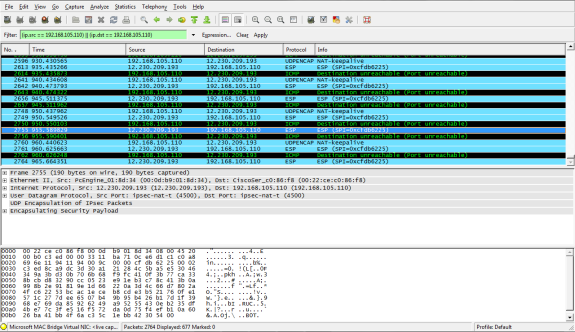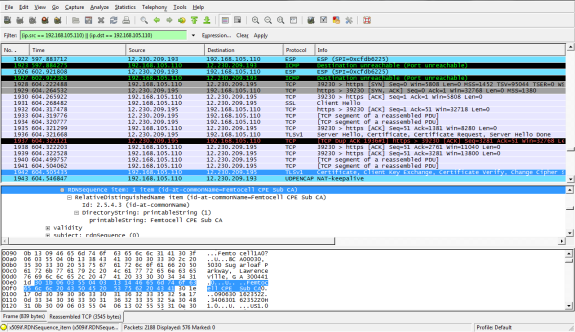AT&T 3G MicroCell: A Comprehensive Exploration
by Brian Klug on April 1, 2010 1:55 AM EST- Posted in
- Smartphones
- AT&T
- Microcell Review
- Mobile
What's going on inside?
In the spirit of really understanding how the AT&T MicroCell works, I was determined to get inside its inviting white shell. Unfortunately, after doing my homework, I started to get a feel for just how locked down this thing is - and why that's the case. First off, there's no internal status webpage as a diagnostic aide like you'd expect from a cable or DSL modem. Nothing. I searched around comprehensively for anything of the sort; it isn't there. What's surprising is that briefly, at startup, I saw nmap report ports 23, 80, and 8080 as filtered instead of open or closed, but that doesn't do anyone any good. The device always reports a hostname of "AT&T" and always pulls a DHCP lease at startup. There's no network configuration to speak of, so if you want to configure a static IP, static DHCP assignment is your only route.
Obviously, tech savvy users also are going to want to configure proper port forwarding and QoS rules for prioritizing MicroCell traffic. Unfortunately, documentation here is beyond spartan. There are (no joke) four versions of the users guide floating around. First is the printed copy in box, then there's an AT&T PDF, and finally one in the FCC filing - all of which lack the section on what ports should be forwarded. Curiously, there's another version online that I later found here with the relevant ports (on page 5), but this was after I had already discovered them on my own.
Before I stumbled across that real users guide, I was determined to find out how the MicroCell was talking with AT&T and over what ports. I grabbed a second NIC and set myself up in a machine-in-the-middle configuration and started sniffing packets. It's obvious immediately that this thing is locked down tight. After booting, the device grabs a DHCP lease, syncs network time over NTP with 12.230.208.48, and does a DNS query for dpewe.wireless.att.com. After it gets the results, it talks with that server over HTTPS (TLSv1) for a bit, and then immediately fires up an IPsec VPN with 12.230.209.193. After that, there's very little we can see going on - everything happens across that VPN tunnel.
Lots of IPsec traffic and NAT-keepalive
The MicroCell uses IPsec with NAT traversal, explaining partly why you don't really have to port forward, but it's still a good idea. In fact, it's during the HTTPS session certificate exchange that we see the only bit of network traffic which would lead us to believe this is a micro, er, femtocell:
So those ports that you should forward or prioritize if you're setting up QoS that way? They're here:
| Port | Description |
| 123/UDP | NTP Traffic |
| 443/TCP | HTTPS over TLS/SSL for provisioning and management traffic |
| 4500/UDP | IPSec NAT Traversal (for all signaling, data, and voice traffic) |
| 500/UDP | IPSec Phase 1 prior to NAT detection, after which 4500/UDP is used |












63 Comments
View All Comments
A beautiful mind - Thursday, April 1, 2010 - link
My Nokia N900 already uses the home/office wifi connection to access the internet, with the possibility to receive/make calls from/to skype.There is absolutely no extra functionality that is provided by the femtocell approach.
softdrinkviking - Thursday, April 1, 2010 - link
For you and me, this is true.But not for everyone.
That's the really sad thing about this device. It's designed as a way to nickel and dime poor souls whose homes are in a dead zone and absolutely have to answer their phone for business.
nafhan - Thursday, April 1, 2010 - link
Great article, and you did an excellent job of diving into the tech behind the femtocell.An interesting follow up to this article might be to see what kind of results you get from purchasing an antenna and repeater. I've seen antenna/repeater setups online in the $350 and up range, and wondered how they would do. If they work OK, it might be a viable alternative, especially for people without good internet connections.
gwolfman - Thursday, April 1, 2010 - link
Where is the print article feature on the new site?Maroon - Thursday, April 1, 2010 - link
They've been sneaking these things in Apple stores. No wonder the iPhone feelgood only lasts untill you get out of the store and have to rely on the "standard" AT&T network. LOL.soccerharms - Thursday, April 1, 2010 - link
Are you kiddin' me? I am going to approach this from two angles. The first being that this article is completely fake. ITS APRIL 1st people! The tech community should have an uproar for such a device. We buy internet and it is usually our responsibility to distribute it around the house with a router for wireless and whatnot. HOWEVER, we do not buy a wireless......phone plan with the intention on increasing a carriers crappy signal in our own house out of our pocket. That's ludacris! There is another much cheaper solution...........its called a LAN line with a cordless phone HA!The only company that could profit from a device like this would be Apple. But they would have to make it a little more shiney and put that quarter eaten logo on the side :)
Let the battles begin....
Jaybus - Thursday, April 1, 2010 - link
This is like buying an airline ticket only to find there is no flight. Since they don't have a flight, the airline offers to sell you your own airplane. You have to provide your own pilot, fuel, and maintenance, but you still have to pay them the full price for a ticket whenever you fly your own airplane. So my idea is to start a car rental business that has no cars. Anyone willing to pay AT&T for a microcell that uses their own Internet connection would surely be willing to pay me a rental fee for driving their own car.HotFoot - Thursday, April 1, 2010 - link
Eh... much of this market is iPhone users - people already willing to accept the concept of ecosystem lock-in. By a similar analogy to your car rental company, they're already willing to buy a car from a company that requires that they drive only on roads built or approved by that company, buy gas only at that company's stations, and buy car insurance from that company.Why not charge them for the roadside delivery of a jerry can of gas when the customer finds out the station filled their tank with water instead of fuel?
yacoub - Thursday, April 1, 2010 - link
I give it a year or two before the first cancer danger report comes out. ;)loydcase - Thursday, April 1, 2010 - link
AT&T cell reception at my house is weak in spots. OTOH, if a femtocell allows me to rip out my landlines, it might be worth it. So I'd like to know if a femtocell would be viable for that purpose.